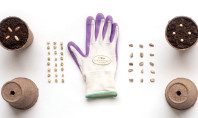Life-Saving Alternatives to Open Heart Surgery

There’s good news for individuals looking for alternatives to open heart surgery. Recent advances in surgical technique and equipment allow surgeons to perform some heart procedures in a less traumatic way. For individuals who are not candidates for open-heart surgery, there are now minimally invasive procedures to remedy aortic valve stenosis and degenerative mitral valve regurgitation. Using new technology, these procedures replace or repair the malfunctioning valves, resulting in improved quality of life, fewer hospitalizations, and symptomatic relief.
“One of our commitments at St. Luke’s University Health Network (SLUHN) is that if we feel new technology is game-changing, we go out of our way to get access to the technology so that we can offer it to our patients as soon as possible,” says Darren Traub, DO, SLUHN’s Medical Director of Cardiac Electrophysiology. “These are game-changing technologies and they’re available right here in our region.”
St. Luke’s Heart & Vascular Center is on the leading edge of minimally invasive procedures with shorter procedure and recovery times, and present different options for patients who are not candidates for traditional open-heart surgeries. “These procedures and devices broaden the pools of patients who now have better solutions to their medical problem and enables them to receive better care in the future,” adds Christopher Sarnoski, DO, Medical Director of SLUHN’s Structural Heart Disease Program.
The Transcatheter Aortic Valve Replacement (TAVR) and MitraClip valve-repair procedures offer patients who suffer from progressive diseases and may not be healthy enough for open heart surgeries a solution to life-threatening cardiac illness. Additionally, the highly specialized technology of the Evera MRI defibrillator allows patients to undergo MRIs, an option unavailable to patients with traditional defibrillators
Transcatheter Aortic Valve Replacement with Sapien 3 Valves
The TAVR procedure is for patients who suffer from a condition known as severe aortic stenosis, a narrowing of the arteries surrounding the heart, which Dr. Sarnoski explains as being similar to a great deal of rust forming on a gate.
“In this case,” he notes, “the wear and tear on the valve doesn’t allow it to open. Essentially, the heart is pumping blood through a pinhole. That’s a mechanical problem that requires a fix.”
In the TAVR procedure, the Sapien 3 valve – manufactured by Edwards Lifesciences and released last summer – Is carried via catheter through the femoral artery using imaging to guide cardiologists as they position the valve.
“These are game-changing technologies and they’re available right here in our region.” – Darren Traub, DO, Medical Director of Cardiac Electrophysiology, St Luke’s University Health Network
A temporary pacemaker paces the patient’s heart at approximately 180 beats per minute for the 15 to 20 seconds the doctor needs to implant the valve. That rapid pace results in little movement of the heart when the doctor implants the Sapien 3.
The doctor uses a wire to guide the balloon-expandable replacement valve, which is on a stent, into the heart and across the aortic valve. The balloon is inflated and, as it expands, it moves the old valve out of the way and the new valve into place.
St. Luke’s cardiologists have done nearly 200 TAVR procedures to date, with outstanding results. “We look at success, mortality both in-hospital and at 30 days, and if the patient had a stroke or major vascular injuries,” notes Raymond A. Durkin, MD, Chairman of Cardiovascular Medicine at SLUHN. “We are superior to the national averages in all of these areas.”
MitraClip
The MitraClip repairs a leaky mitral valve in patients who are too high risk for surgery. To implant the MitraClip, the surgeon guides the device through the common femoral vein.
“We go in the right atrium, do a septal puncture and enter into the left atrium above the valve,” explains Stephen Olenchock, DO, SLUHN’s Chief of Cardiovascular Surgery, who traveled with Dr. Sarnoski to Cedars-Sinai Medical Center last July for highly specialized MitraClip training.
The surgeon then uses imaging to place the clip in the area where the damage is or in the area where the leak is occurring. The MitraClip is repositionable and attaches the mitral valve’s front and back leaflets together to help prevent blood leaking back into the heart.
“The MitraClip procedure can take anywhere from 45 minutes to two hours depending on how many clips we need to place, how many times we need to reposition the clip and how easy it is to grab the leaflets with the clip,” Dr. Olenchock points out. “At other sites, the average time is about two hours. Ours is about 45 minutes. This speaks to the outstanding work of our heart valve team and the quality of imaging we get.”
Evera MRI
In the past, having a pacemaker or an implantable cardioverter defibrillator (ICD) meant patients could not undergo an Magnetic Resonance Imaging (MRI) exam, which uses a magnetic field and radio waves to take highly detailed images of organs and structures inside the body. Not any more, thanks to devices such as the Advisa MRI pacemaker and Evera MRI ICD manufactured by Medtronic.
“Around 2010, Medtronic released an entirely new pacemaker platform (Advisa MRI) with leads that disperse heat and filtering that would prevent the device from malfunctioning from the electrical field that’s created by the MRI magnet,” Dr. Traub explains.
“In September of 2015, the first MRI-compatible ICD was released,” Dr. Traub says of the Evera MRI ICD. “Within 10 days of FDA approval, St. Luke’s implanted its first Evera MRI ICD. It’s our responsibility to offer our patients the best technology as quickly as possible.”
“There is no substitute for an MRI for imaging of the spine or soft tissue of the brain,” Dr. Traub says. The implant technique is exactly the same as the standard pacemaker and ICD. Eight weeks after the implant, patients can undergo MRIs. “We place MRI pacemakers and ICDs in all of our patients unless there is a compelling clinical or patient related reason to use a different device technology.”
St. Luke’s has placed hundreds of MRI compatible pacemakers and ICDs and performed dozens of MRIs on patients to-date.
“Our structural heart program in which cardiologists and heart surgeons work together to do less-invasive and highly specialized procedures is on the forefront of that. Every specialized cardiac procedure performed at any major university hospital in the country is available right here at St. Luke’s,” Dr. Durkin says.














